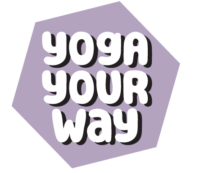The curve that you see in this x-ray is rather graceful, isn’t it? But it’s not desirable – it’s thoracolumbar scoliosis, with the spine curving to the left. This is an image of my own spine – yes, I have scoliosis, though it’s not severe enough to cause a lot of pain or necessitate bracing or surgery. But I do experience intermittent low back and sacrum pain which is likely at least partly caused by this relatively innocuous curve.
What is scoliosis and why is it a problem?
Our spines are supposed to have a double “S” curve forward and back: the sacrum curves back, the lumbar spine (low back) curves forward, the thoracic spine (upper back) curves back, and the cervical spine (neck) curves forward again. These curves allow us humans to stand upright and walk. The spine is not supposed to curve laterally – when that happens, we call it scoliosis. Scoliosis can manifest as a single curve, usually in the lumbar spine, or as a double curve – one in the lumbar spine and an opposite curve in the thoracic spine. These curves are also accompanied by rotation, which causes the ribs, most of which are attached to the thoracic spine, to splay out. The curves affect the muscles that attach to them, creating asymmetries, and asymmetries in the muscles can further affect the curves, in a vicious cycle.
Sometimes people have scoliosis and don’t exhibit any symptoms. But as the curves become deeper, they can cause significant back pain. In some cases, the lungs can be compressed, making it more difficult to breathe.
What causes scoliosis?
Scoliosis seems to run in some families, so there might be a hereditary factor. It can also result from birth defects, certain neuromuscular conditions, such as muscular dystrophy or cerebral palsy, or diseases such as polio or spinal tuberculosis. My mother had severe scoliosis, no doubt caused by being placed in an iron lung when she had polio, and double pneumonia, in the nineteen-forties. But these diseases have been mostly eradicated in our society, so it’s rare to find people with scoliosis nowadays due to disease.
Most scoliosis is “idiopathic,” a fancy word for “we don’t know the cause.” Many adolescents develop scoliosis when their spines are still growing, and relatively vulnerable.
How is scoliosis treated?
The traditional treatments for scoliosis involve bracing (for curves greater than 25 degrees) or surgery (for curves greater than 45 degrees). Bracing only really works for children and adolescents, whose spines are still growing. It can help mainly to prevent curves from getting worse, although some bracing can actually lessen the curves. The braces, which are full-body, need to be worn for a long time – a year or longer. They can cause muscle soreness, and weakness, since the brace prevents muscles from being used much.
Surgery seems to be quite successful in straightening scoliosis curves, but first, surgery is always risky, and second, the section of spine that is affected will no longer be flexible.
So let’s get to the good part: how about yoga?
As a yoga teacher and therapist, I suppose I often exemplify Abraham Maslow’s famous quote: “If the only tool you have is a hammer, you tend to see every problem as a nail.”
Yoga isn’t the answer to everything, but in this case, it really works, and we have the statistics to prove it! Dr. Loren Fishman, a Manhattan physiatrist (and yogi) with whom I work as a yoga therapist, has devised a program of yoga poses for scoliosis. These poses work well for people of all ages. Right now, Dr. Fishman has designed and is implementing an FDA-approved, randomized control study of yoga for lumbar adolescent idiopathic scoliosis, and has already obtained impressive results: an average of 34% improvement over 3 months. He is still actively recruiting study subjects, so if you know of any teenagers between the ages of 12 and 20 who have scoliosis who might be candidates for this study, please contact him (or me). There is no fee for participating in the treatments, and it is a crossover study, meaning that anyone who is a control would also receive the full treatment at the end of the study period (which is 3 months).
For more information, here is an article that Dr. Fishman published in the Swiss journal Muscles, detailing interim study results. And here is a 12.5 minute video of a recent presentation Dr. Fishman gave at Columbia University.
